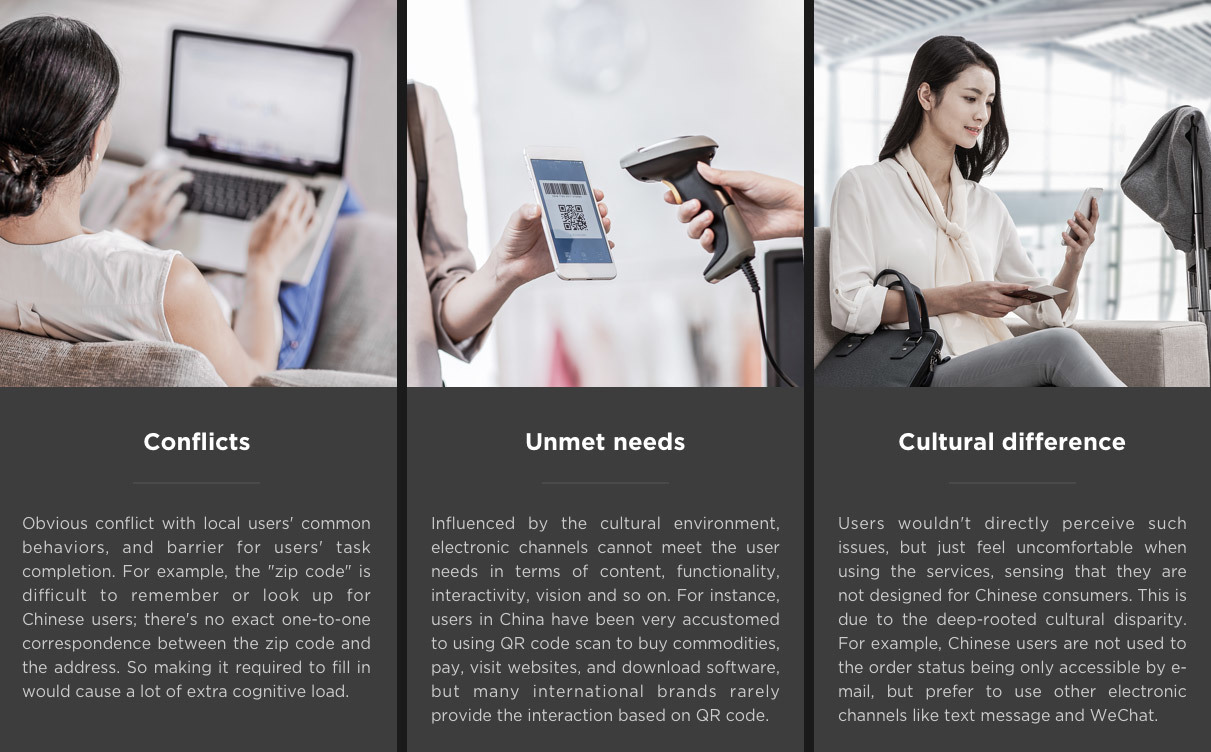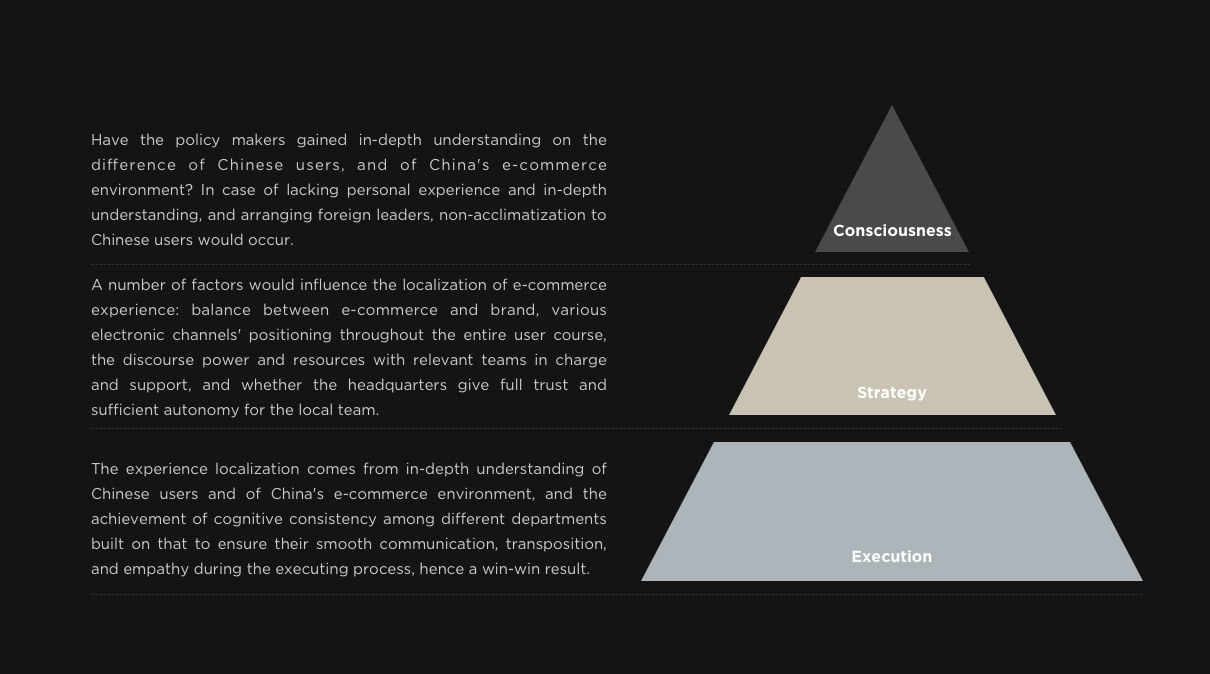Insight | Industry
Research on E-Commerce Experience Localization of International Brand Released

TANG UX
Building Better Brands in the Age of eXperience
Share to
On April 8th 2016, ASOS announced that it was to stop operating in China from May. E-commerce of International brands are rushing into Chinese markets, but they are also suffering from failure. Do international brands really understand the Chinese market and users? Do in Rome as the Romans do is first lesson for international brands to enter China.
Localization ≠ Translation
In 2015, the sales amount of L'Oréal Group in the Chinese market reached 14.96 billion yuan, with a year-on-year increase of 4.6%, among which sales of e-commerce channels increased by 60%. International brands in different fields such as Zara, Burberry, IHG, and City Bank have also established their e-commerce websites in China. The Chinese market has become the blue ocean in the eyes of many international companies.
Taobao has changed e-commerce environment in China, and the cultural background and environment in China are also special. The simple translation of international websites cannot meet the demands of local Chinese users. How to achieve a true experience localization and be distinguished from the competitors has become an urgent problem for international brands.
Foreign Brands Cannot Acclimatized to Local Market
International brand companies face problems related to localization experience with different degrees. With deep insights and thinking in previous projects, TANG has summarized the problems into three levels, from the surface to the essence:

Break the Dilemma of eXperience Localization
For experience localization, many international brands adopt the approach “international design, local test”. However, the experience enhancement of entire e-commerce platform is limited by fixing a single problem through testing. To break the dilemma, we need to start from the following three aspects:

Balance Between Globalization & Localization eXperience
The e-commerce platform localization of the international brands is process about balance actually. The ultimate globalization can conquer the users, and the ultimate localization is also a bet to win users. TANG believes that enterprises can balance the degree of localization from the four dimensions of target users, brands, design and cost.
The “localization” of target users firstly affects the e-commerce platforms localization of international brand. Normally, there are differences between Chinese local users and target users defined by the headquarters. For TANG, understanding of these differences comes as the premise of localization. The localization around the user and the brand needs to be considered. Take an example, for luxuries, what Chinese users pursue are the international fashion and style; when it comes to daily life products, convenience and comfort in line with local customs are paid more attention by Chinese users. During the process of design, in addition to the interaction behavior and visual perception of Chinese users, different needs are also to be considered, such as the use of QR codes. Of course, the cost of human resources, development and operation brought about by localization is also a dimension that needs to be considered commercially.The “localization” of target users firstly affects the e-commerce platforms localization of international brand. Normally, there are differences between Chinese local users and target users defined by the headquarters. For TANG, understanding of these differences comes as the premise of localization. The localization around the user and the brand needs to be considered. Take an example, for luxuries, what Chinese users pursue are the international fashion and style; when it comes to daily life products, convenience and comfort in line with local customs are paid more attention by Chinese users. During the process of design, in addition to the interaction behavior and visual perception of Chinese users, different needs are also to be considered, such as the use of QR codes. Of course, the cost of human resources, development and operation brought about by localization is also a dimension that needs to be considered commercially.
How can X Thinking help you?
It all starts with a conversation.


